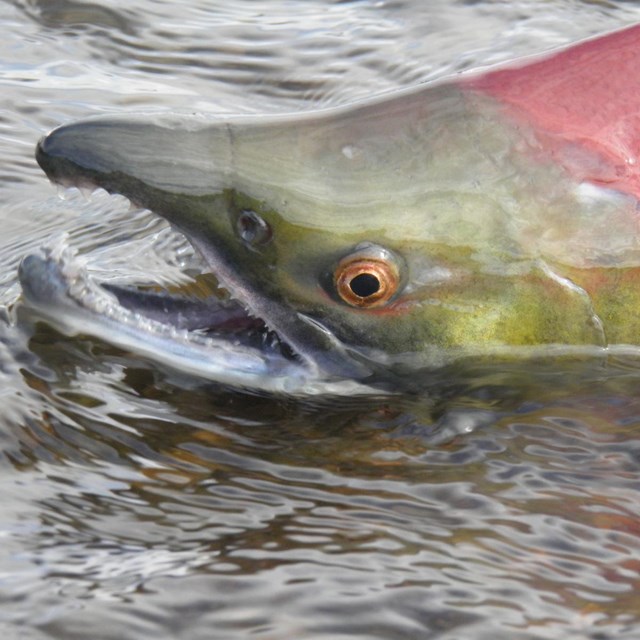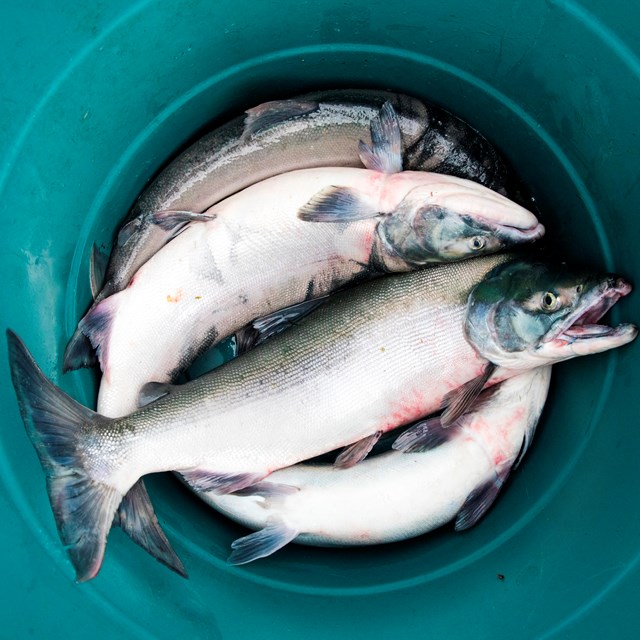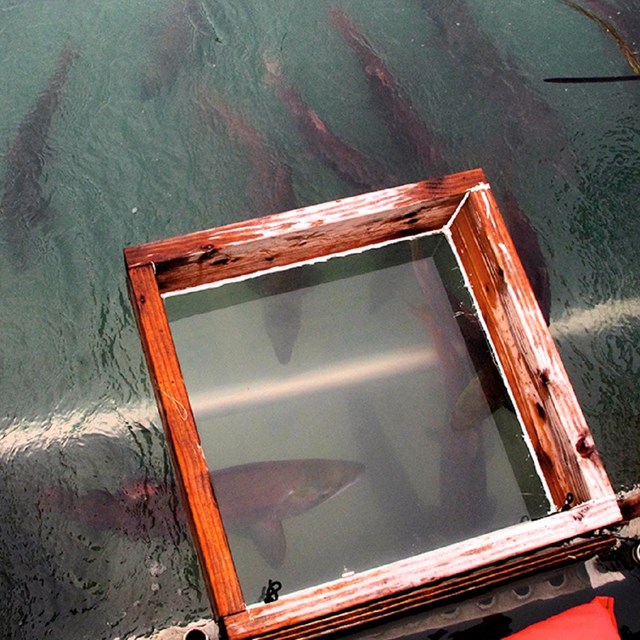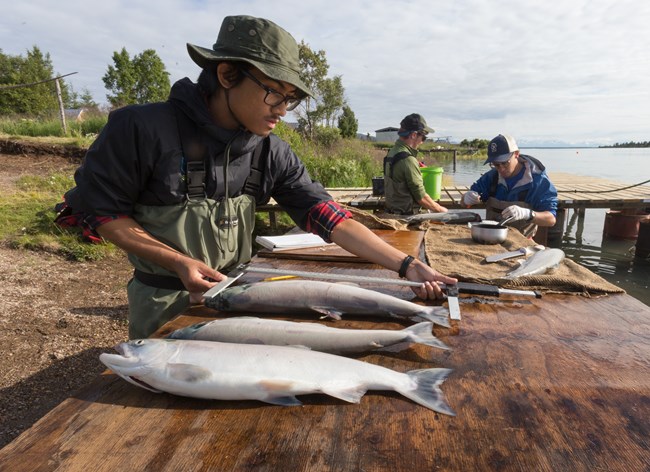
NPS/T. Vaughn Maintaining healthy runs of sockeye salmon, which are also known as red salmon, is critical to the ecological, economic, and cultural integrity of Lake Clark and the entire Bristol Bay region. The Alaska National Interest Lands Conservation Act of 1980 established Lake Clark National Park and Preserve “to protect the watershed necessary for perpetuation of the red salmon fishery in Bristol Bay.”
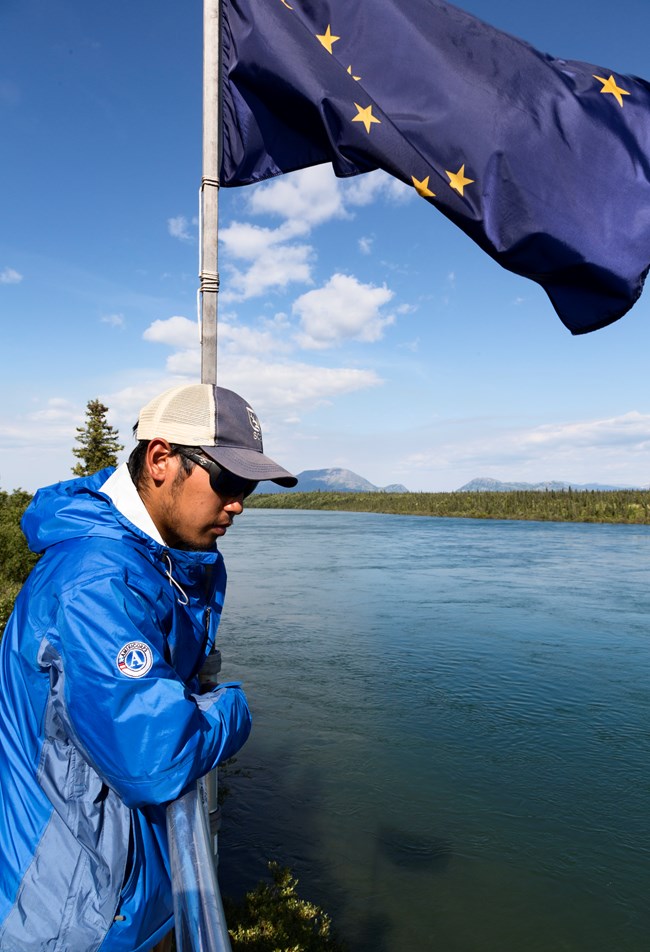
NPS/T. Vaughn Each year, millions of sockeye salmon return to Bristol Bay–infusing life into the culture, economy, and ecosystem.In the Lake Clark country, salmon have sustained people and provided for the majority of their subsistence culture from early history to the modern day. In addition to the sockeye caught by local residents, the Bristol Bay commercial fleet harvests around 20 million sockeye salmon valued at more than $100 million annually, making it the world's largest and most valuable commercial sockeye fishery. Ecologically, salmon returning from the sea provide nutrients vital to resident fish and wildlife populations. In the fall, rivers and lakes are hubs of activity with bears, bald eagles, and wolves feasting on the abundant spawning sockeye. In 2019, park biologists estimated the Lake Clark escapement (the number of adult salmon that 'escape' the fishery to spawn) at 270,000 sockeye salmon. This was 33% below the mean from 2000 to 2018 (400,000 fish). Similar to the previous year, the 2019 fish returned a couple of days later than average with a peak count on July 23rd. Unlike the return to Lake Clark, the 2019 salmon return (catch + escapement) to Bristol Bay was one of the largest on record. In total, 57 million fish returned to Bristol Bay with about 39 million harvested in the commercial fishery. This return was 45% above the 39 million average for the latest 20-year time period. Monitoring Sockeye on the Newhalen RiverThis project provides real-time information to subsistence fishers as well as reliable estimates of spawning escapement to assess long-term trends and patterns. In 1980, the Newhalen River counting towers were established by the University of Washington, Fisheries Research Institute to better understand the contribution of the Newhalen and Lake Clark watersheds to the overall Kvichak River sockeye salmon production. Salmon returning to these drainages provide 44-89% of the total wild resource harvest for residents in local communities. Monitoring continued at this site through 1984 with estimated returns ranging from 147 thousand to 3.1 million sockeye salmon. In 2000, the project was re-established by the University of Washington and the the U.S. Geological Survey (USGS) because of concern about unprecedented declines in the sockeye salmon returns to the Kvichak River and Lake Clark watersheds and because of the importance of these fish for local subsistence users. Since 2004, the National Park Service has continued to monitor the Newhalen River salmon return with annual estimates ranging from 172 to 730 thousand sockeye salmon.Updated Daily In SummerNewhalen River Sockeye EscapementUpdated Daily In SummerTelaquana River Sockeye EscapementMore Salmon
|
Last updated: July 23, 2024

